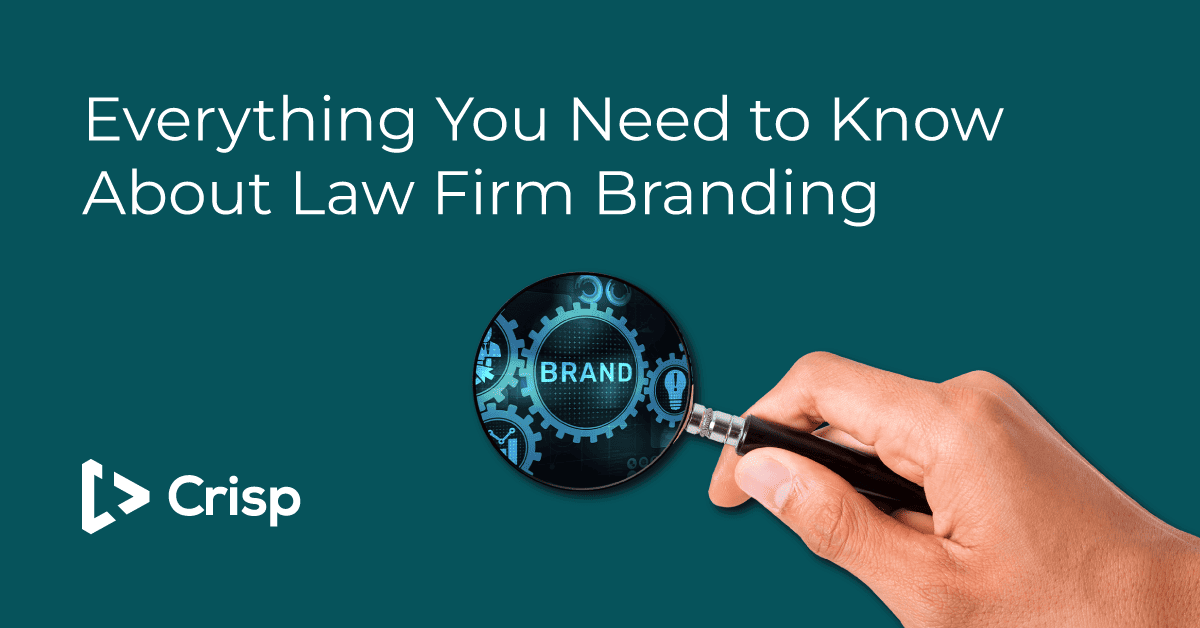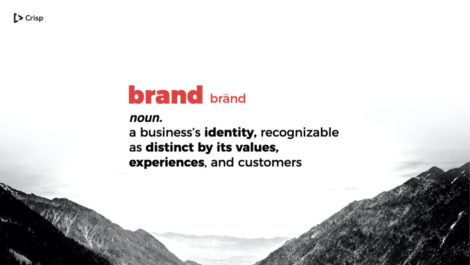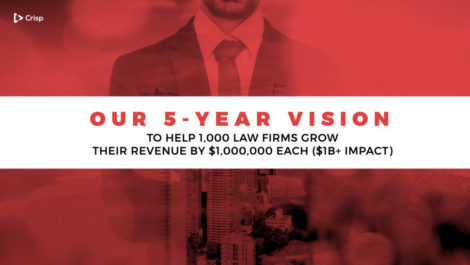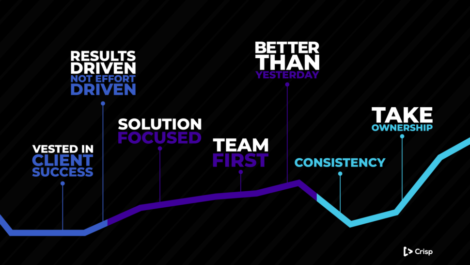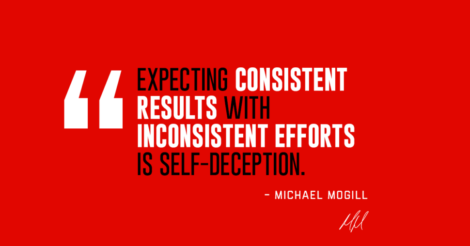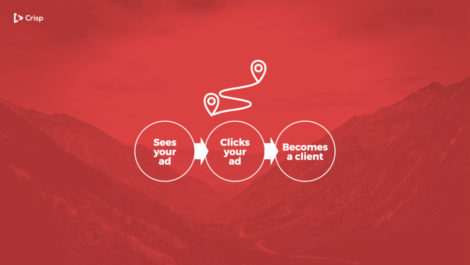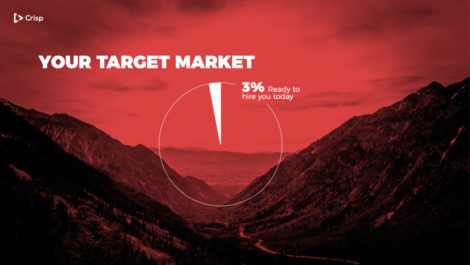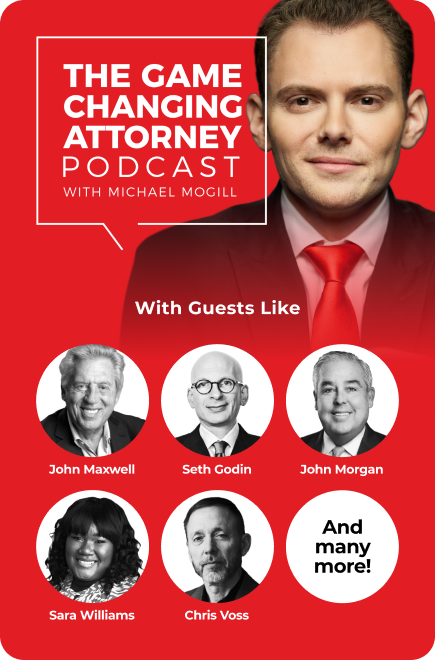What is a brand anyway? Why does it matter to a law firm owner? Aren’t brands just for consumer goods and restaurants? Does a brand really have any true relationship to business success?
In this article, we’ll dig into:
- The True Definition of a Brand
- Components that Make up a Brand
- How Brand Awareness Impacts Leads
- How to Measure Brand Awareness
Let’s get to it!
The True Definition of a Brand
As marketing expert and best-selling author Seth Godin once explained:
“A brand is the set of expectations, memories, stories and relationships that, taken together, account for a consumer’s decision to choose one product or service over another.”
Let’s first make one distinction. Our focus will be on brand awareness, not brand recognition.
Brand awareness measures if the public can recall information, emotions, or impressions about a brand without any visual aids.
Brand recognition measures the extent to which the public can identify a brand from visual elements such as a logo or jingle.
You can’t have brand recognition without brand awareness, so your first step is to focus on brand awareness.
Brand awareness starts first by establishing the brand.
Webster’s Dictionary defines brand as “a business’s identity, recognizable as distinct by its values, experiences, and customers.”
In short, brand is about a distinct, recognizable experience that a client or potential client relates to a company.
Consider the brands that many consumers admire the most — the ones considered the most iconic in our society. Did brands like Apple, Nike, Disney come to mind? Why?
- They dominate their market. We call them Nikes, not sneakers.
- They’ve become more than just a logo. They’ve built an expectation of an xperience.
- They have a dedicated following. When’s the last time anyone camped out at a Best Buy waiting for the next big Google phone?
But those are consumer brands, right? You may think that no law firm can inspire this kind of dedication.
But think again.
Firm owners like Alexander Shunnarah have truly mastered the concept of building a brand — so much so that there are even memes about his dominance in the Alabama market.
Shunnarah and other successful law firm owners who are best known in their markets have discovered the secret to creating a brand like Apple and Nike.
Now it’s time for you to learn it too.
Take a look at the definition of brand again. The word that should stand out is identity. What this traditional definition has left out that the best-known law firm owners have been able to expand on is that the ideal client has to identify with that identity.
Creating that connection of identification is what differentiates mediocre brands from great brands.
What elements of brand will people identify with?
Beliefs, values, and experiences.
To summarize, a brand is about creating a recognizable identity based on values and experience that can generate a movement of loyalty with the ideal client.
To get this all right, the next step is to ensure your law firm has all the components that make a brand.
Components That Make Up a Brand
There are five main components of a brand:
- Identity
- Purpose
- Messaging
- Differentiation
- Experience
Identity
The Identity of a brand is often what comes to mind when you think of a brand. It’s the external images — the visuals that signify your brand.
This can include everything from your logo to a tagline, to a jingle, to your website, and so on. It’s the overall look and feel of your law firm. Identity is arguably the element your ideal client remembers first (back to our old friend brand recognition), so it needs to stand out.
Purpose
The Purpose of your law firm’s brand encompasses the mission and values of your firm. These should work together to tell a story about who you are and what you do.
Overall, your purpose is what you promise to your ideal clients (but maybe mix it up from the generic phrase, “I’ll fight for you”). Your mission is the larger goal you aim to achieve. Your values are what your brand represents.
Take Crisp as an example. The purpose of Crisp is to create transformational growth. That’s for our clients, for our team, for our families — everyone we impact.
Our mission is to help 1,000 law firms grow by over a million dollars in revenue each ($1B+ impact).
And the values that we stand for are:
- Vested in Client Success
- Team First
- Take Ownership
- Solution Focused
- Consistency
- Better Than Yesterday
- Results Driven
Values shouldn’t just be meaningless phrases that are stated on a website. They have to actually be lived throughout your company in your culture, messaging, decision-making, and so on — so make sure your purpose is truly something that your firm is passionate about and stands for.
Messaging
Messaging is the voice of the brand. This is the language used on your website, in marketing communications, in printed materials, on social media — everywhere your law firm communicates to your ideal clients.
Your law firm’s messaging must be consistent everywhere. There can’t be a formal voice on one channel and a playful voice elsewhere. Your marketing materials need to reflect this messaging, but so must anyone managing client intake or interacting with prospective clients in your firm.
There are a variety of different voices your brand can take, so choose the one that suits you best, contributes to what you want your firm to achieve, and aligns with your purpose.
Take our messaging. Crisp’s purpose is to create transformational growth, so we don’t talk about growth in just transactional terms. We talk about it passionately in terms of growth that impacts every aspect of the lives of our clients.
The passion behind our purpose also means our tone is a little tough. We don’t let our clients off easy, the same way a great personal trainer doesn’t let their clients slack off. And we do it relentlessly (please check your inbox right now; you probably have at least a dozen emails from us in the last few days).
Remember to focus your messaging on your purpose and your own vision for your firm — and stick to it.
Differentiation
Differentiation is what makes you different from your competitors. Law firms get a bad rap for looking very much alike in their messaging and marketing. But all law firm owners and firms are different. There is a unique reason you got into law. There is a unique reason you started your own firm. There is a unique way you approach your clients and your business. Embrace that. Communicate it.
And if you need help, be sure to check out The Law Firm’s Guide to Determining Your Unique Value Proposition.
Experience
Experience is the way your clients connect or interact with you during their entire decision-making journey — and it is perhaps the most powerful contributor to how strongly your clients connect with your brand. 73% of people say they love a brand because of its customer experience.
Without clients, you have no law firm. There’s no way to overstate just how important it is for each client to have a phenomenal experience with your firm from the first point of contact.

When you invest in your client experience, it pays off in huge ways, both instantly and in the long run. Here are just a few of the benefits:
- Increased Revenue: The better client experience you provide, the more cases — and thus more money — you will bring in.
- Greater Team Morale: The happier your clients are with the experience you provide, the happier your team will be to serve them, and the more committed they will be to your law firm’s vision.
- Brand Advocates: A brand advocate is someone who elevates your brand through word-of-mouth marketing. Brand advocates leave positive reviews about your firm and refer new clients and create content on your behalf. If you provide world-class service to your clients, they will become these brand advocates.
- More Premium Offerings: The brands that are known for being the best and delivering the best service are the ones who are able to charge more for their services — and people will be glad to pay a premium for that premium experience.
- Lower Cost of Acquisition: The better your brand’s reputation is, the less you’ll have to spend to acquire new clients. If your target audience has already made up their mind that you’re the firm they want representing them, your marketing won’t have to work as hard to convince them.
- Brand Credibility: Companies that are known for providing excellent client experience are viewed as more trustworthy in the eyes of their target audience. Why do most people think Delta is more credible than Spirit, the Ritz-Carlton is more credible than Super 8 Motel, and Chick-fil-A is more credible than Popeyes? Replicate their success in your law firm by prioritizing client experience.
- Referrals: Consumers love to recommend brands and organizations that create an unforgettable client experience for them. Become that kind of organization, and you will generate more direct referrals over time.
- Stronger Marketing: Marketing your law firm is easy when the service you promise is a cut above the rest of your competition. Live up to that marketing and the results will only accelerate.
- Higher Margins: If you’re ready to get the most out of your law firm, it starts with prioritizing excellent client experience. Once you do, everything will fall into place, and the revenue coming in will greatly exceed the investments you make in growing your business.
Providing a world-class client experience gives your business the opportunity to step back and let your work speak for itself. When the clients you serve choose independently to leave positive reviews, share their experience on social media, and tell their friends about your brand — that provides all the evidence that client experience is a competitive advantage.
How Brand Awareness Impacts Leads
Spending a lot of time on the brand of your firm can seem like an unnecessary step. You may think that having a nice logo and consistent value-driven messaging doesn’t really bring you leads — but let’s consider the big picture.
How often does a lead just fall into your lap directly after the first time seeing anything about you? Probably pretty rarely.
That’s because it takes 5-7 touchpoints for an ideal client to remember and act on a particular brand.
So that means your ideal client’s journey has gone from this:
To this:
Does brand awareness really influence this journey at all?
If you dig into your law firm’s website analytics, you will likely notice that a majority of your website traffic comes from two sources: direct and search. If you dig into those metrics deeper, you will see that the search traffic is predominantly driven by two things:
- Your brand term — paid for or through organic search
- Very specific expensive paid search terms (the legal industry has the highest cost per click in search out there)
Search plays a very important role in your marketing strategy for sure. But how does your ideal client even know to search for you specifically in the first place?
You guessed it — brand awareness! There are many reasons certain channels get all the credit and your brand awareness channels (think social media) get overlooked, but the main reason is because of the complex field of marketing attribution models.
There are six common attribution models:
- First interaction
- Last interaction
- Last non-direct click
- Linear
- Time-decay
- Position-based
We will dig into the two most commonly used for law firms: first and last interaction.
First Interaction Model
The first interaction model gives credit to the marketing channel that the user touched first.
So if your ideal client saw a social ad, did a search, and then got an email three weeks later and went directly to your website to submit a contact form and become a lead, then the social ad would get the credit for that lead.
Last Interaction Model
The last interaction model, otherwise known as “last-click,” gives 100% of the credit to the very last channel your ideal client interacted with before becoming a lead.
Here’s an example: an ideal client sees a video from your law firm on social media and becomes aware of who you are first. They continue to see your messaging online after being retargeted and clicking on a few of your posts to see more content on your website. They continue to build awareness of your brand and get to know you over time. A few months later, they are in need of a lawyer and they immediately think of you. Later that day, they go directly to your website and submit a contact form.
The channel that gets the credit then is direct traffic to your website. Last interaction is the default model for Google Analytics and website tracking.
What is great about this model is there is 100% certainty of what the last click was. That is hard with first interaction. However, this model 100% ignores everything else that happened before that last interaction — which means crucial factors like brand awareness are completely ignored.
This method is most indicative for those that have a short buying cycle — which can be the case for many practice areas in the legal space. An ideal client is probably only directly looking for your service the minute they need a lawyer.
This model really only deals with a small sliver of your potential market because only 3% of your ideal clients are ready to use your service right now. So you’re missing a huge audience of people who six months ago didn’t need a lawyer but started becoming aware of your brand, and then came to you directly when they needed your services much further down the line.
So if you have ever wondered why a brand awareness campaign on social looks like it may not be working, think about the way that you are measuring that social campaign, particularly since social media is considered a heavy brand awareness channel.
All this then begs the question: If you shouldn’t just look at direct leads — how do you measure brand awareness?
How to Measure Brand Awareness
Social media is the number one platform out there for building brand awareness. Today, it is definitely a pay-to-play space, as the reach of organic posts is nearly zero. This means that social ads are a crucial part of your marketing strategy here.
To get an idea of how aware your ideal client is of your law firm, you can look at a few common metrics:
- Frequency
- Social media following
- Branded search traffic
- Direct traffic
- Video views
- Brand survey responses
Frequency
Frequency is the number of times an advertisement is seen by each viewer. Remember that your ideal client needs to see your message at least 5-7 times to even remember you.
The Crisp Social Stack program is a powerful tool for maximizing the frequency of your law firm’s social campaigns. You can get some of the secrets on maximizing frequency through this guide on Facebook advertising for law firms.
A healthy frequency is a healthy sign of building strong brand awareness — but make sure your campaigns target your ideal clients.
Social Media Following
Outside of frequency, you can look at your social media following. How many fans do you have? How engaged are they? Is your audience growing? Track your channels each day and notice the trends. But also take into account who your fans are. While it’s great to have all your employees, their families, their dogs, and their exes as your fans, you want to make sure your audience is actually made up of your ideal clients.
Branded Search Traffic
To measure branded search traffic you will have to use Google’s most underrated search tool: Google Search Console. Google Search Console is a powerful tool that can be set up very similarly to Google Analytics and can even sync data into Google Analytics.
The secret magic behind Google Search Console is that you can actually see keyword data. Long ago, Google Analytics removed almost 90% of keyword data tracking due to privacy concerns. So what you will primarily see is a lot of what’s called “not provided” data.
Google Search Console, however, shows you all the keywords getting impressions and clicks for your site as well as their average position in search results. You can use this tool to track search volume from impressions and clicks to see how you are trending upwards over time. Increasing brand searches is a healthy sign of increasing brand awareness.
Direct Traffic
Increases in direct traffic are a sign of increasing brand awareness. Think about it — who knows to go directly to your site? Only those who know about you. And how do they know about you? Brand awareness! So pay attention to increasing direct traffic, especially from new visitors over returning visitors.
Video Views
Video views are a somewhat forgotten metric — particularly because they can be the hardest to track. Along with social media, video is a great awareness-building tool.
Video tends to be the first content your ideal client will see about you, and 72% of people prefer to consume video content over any other format. To track video views, you can look at video views on your social media platforms such as Facebook and also use embedded video tools on your website such as YouTube and Wistia to track video views there. Increasing those views means increasing your brand awareness.
Brand Survey Responses
Finally, one of the most seemingly complicated ways to measure brand awareness is to start with a survey. Brand awareness surveys range from the very simple to the very complex in terms of their structure and distribution. Most brand surveys are managed through third-party vendors to give you a sophisticated indicator of where you are on the brand awareness benchmark with your ideal clients.
But you don’t have to invest a lot of dollars into a brand awareness survey. You can start out small by using an email list you have of non-clients or bringing surveys to any community events you participate in. You may need to try incentivizing your audience to complete your survey with things like a gift card or a raffle, but it can still be an affordable process.
To structure your survey, you really only need to ask three questions:
- Have you ever used a lawyer?
- If you needed to choose a lawyer, what factors would you consider?
- Have you heard of us and if so, how?
Final Thoughts
Take a deep breath — you’ve learned a lot. Overall, remember:
- Brand is a powerful tool when done correctly.
- Brand can be a law firm’s best-kept secret to generating market share and becoming best known.
- Measuring brand based on leads leaves a lot of opportunity on the table.
- Brand measurement doesn’t have to be overly complicated.
So go forth and use the tools in this guide to build a strong brand that can stand out from your competition and make your law firm best known in your market.
Or better yet, partner with an experienced team of law firm growth experts to ensure you’re maximizing every opportunity to build your law firm’s brand.
Connect with us to make it happen.

